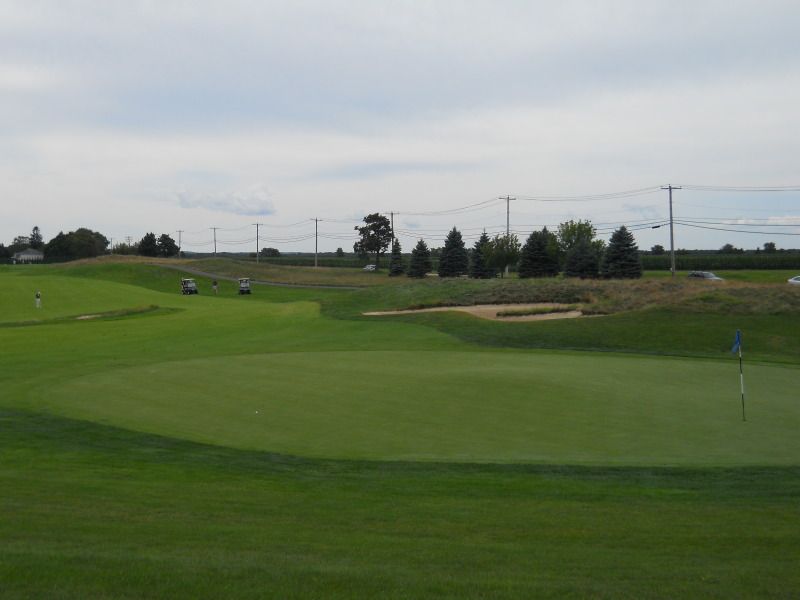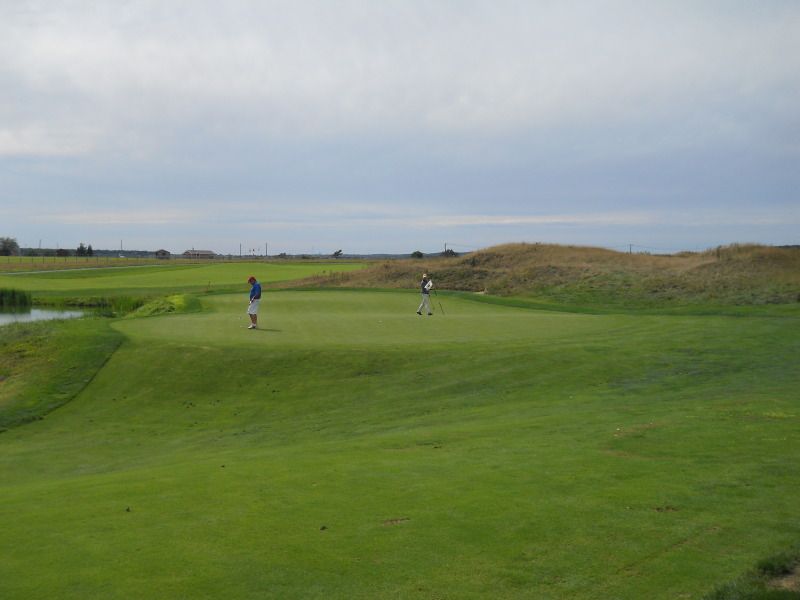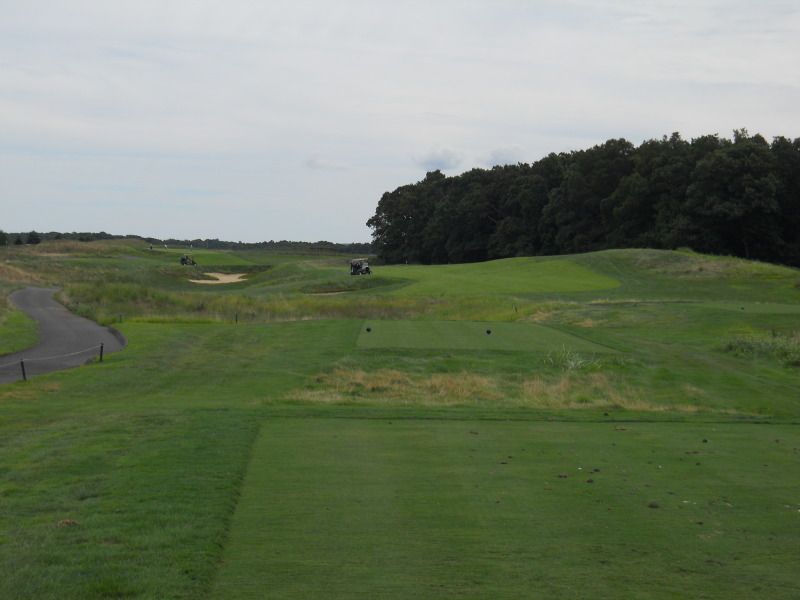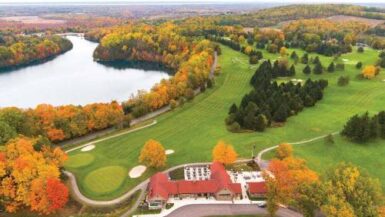
[Author’s Note: For Barclays week, each day we will profile a different regional public course for everyone to play while in the area for the tournament.]
RIVERHEAD, NY – It’s tough to get a pulse on Robert Trent Jones, Jr.’s architectural style since he’s done so much globetrotting and designed in so many different ecosystems. He also keeps having epiphany after epiphany regarding design strategies, proving that you can teach old dogs new tricks and they can get really good at them.
“Jones’s longevity and diversity are remarkable. He’s 70 going on 30, and that’s a good thing for architecture fans,” said golf design expert Rodney Zilla, and he’s right. Jones is quite the plucky duck, gleefully mixing it up course for course with all the young Turks like Tom Doak, Jim Urbina, and Gil Hanse, who have helped usher in the Second Golden Age of Golf Course Architecture, (or “Platinum Age” if you prefer that term.)
Jones has reached a Golden Age of his own right now with his marvelous work at Chambers Bay. A masterful work which seamlessly blends with the land along Puget Sound, the course will host the 2015 U.S. Open, the first U.S. Open for the Pacific northwest. Moreover, Jones has used his ideas at Chambers Bay as a springboard for his future courses. Word on the street is that his new design for the West course at Dorado Beach may follow similar lines, catapulting the resort back into the rarified air of a worldwide “must play” venue.
But it takes time for an architect’s style to evolve – natural progressions don’t happen instantaneously. If you want to see one of those courses that is sort of in the midpoint of the sea change in styles for Jones, go see Long Island National in Riverhead while you’re in town for the Barclays.
“We had done Spanish Bay back in 1987 with Tom Watson and Sandy Tatum, the first re-crafted links-style course, and in preparation had studied the old U.K. links, particularly Royal Birkdale and Formby,” said Robert Trent Jones, Jr., who went on to explain that he had chosen to move away from sweeping bunkers of bunkers of Tillinghast, his favorite Golden Age architect, and instead utilized the pot bunkers of the great U.K. courses at Spanish Bay.
“We also used contours and undulations on the fairways and greens, broad, sweeping contours with all sorts of wonderful swales and hollows. It was a major change in my way of thinking, primarily due to Watson and his love of the ground game, which led me to start to love the ground game more, (well, that and having just been made a member of the R&A). Long Island National was a continuation of that sort of style. It was inspired by and a continuation of what we did at Spanish Bay and also Desert Dunes in Palm Springs,” Jones concluded magisterically.
You remember how when Spanish Bay opened Tom Watson gushed that it was, “so Scottish you could hear the bagpipes playing”? It was hyperbole then and it’s hyperbole now – when you’re at L.I. Nat., you won’t think you’re in Scotland, but you won’t think you’re on Long Island or in the shadow of New York City either, which is the point. Great golf courses are part transportive and part elixir, and L.I. Nat. is both. Starting with an old potato field with one foot of elevation change Jones move 600,000 cubic yards of earth and laid his fairways between excellent shaggy, somewhat sandy dunes. But while Birkdale’s fairways are relatively flat and just sit in the low points between the dunes, the terrain of Long Island National bounds and tumbles all over the landscape. Some fairways roll off into deep swales, some sit amidst deep sandy wastes, and still others twist serpentinely around the surrounding dunes. The routing of the course is exciting, and the course also scores many points for great movement in the earth, both in the horizontal sweep of the fairways and the vertical movement of the swales, hollows, and contours.

The greens are similarly excellent. Some, like the first, have a mound in the middle, which sheds balls to the perimeter of the green. Others are severely canted, such as the second, which tilts sharply right to left. Still others, such as the 12th, have deep swales dividing the green into several plateaus.
“It’s almost a Biarritz but not quite, but the rolls are lovely,” said course public relations maven Jim Ellis, another well-educated student of golf course architecture. “Macdonald and Raynor are my favorite designers,” he adds enthusiastically.
The course is more modern looking than Macdonald and Raynor courses, and at times seems to fight with the land. Moreover, the soil is a thicker clay rather than sandy soil which would propmote the ground game. With some greens elevated and others featuring swales immediately before the putting surface, you really can’t play the ground game here. However the outstanding green contours and excellent roller-coaster fairways provide adequate compensation. You won’t lack for fun.
Moreover, you should come to see it for its historical importance in the Jones, Jr. portfolio. It’s a watermark course in that you can see the evolution of his change of styles as he moved from his first links-style effort at Spanish Bay to his absolutely flawless links design at Chambers Bay, where he has the design concepts firing on all cylinders.

Is Long Island National a “public Friars Head?” No, but it’s not supposed to be. It’s a good public option which can be affordable if you shop around for the right tee time. You can get on for anywhere between 35.00 USD walking during the week to 109.00 USD during prime weekend hours, and it’s an interesting round. Your golf game will be tested, so be warned. It’s a tough driving course. Wider fairways were not as much in vogue in the mid-to-late ’90s as they are now, and several holes will test your driving accuracy.
“The huge hitter will have to think twice,” Jones adds laconically.
If you get out of position, however, you have a more reasonable chance to recover than a course where the greenside hazards are more penal than at L.I. Nat. Some may find the course similar to the Kaluhyut course at Turning Stone Casino, if they were unfortunate enough to have found themselves swept onto the desolate shore of the resort infamous for talking itself off the PGA Tour’s kids’ table rotation of lesser tournaments.
However unlike Kaluhyut, Long Island National is not “hard for hard’s sake” or pipe dreaming about luring a major championship. Higher handicappers that can tack their way around and with the greens in as superlative condition as they are, you’ll make a boatload of putts of you read the excellent green contours well enough. And that’s enough to make you want to come back.




